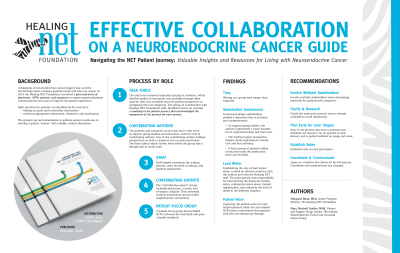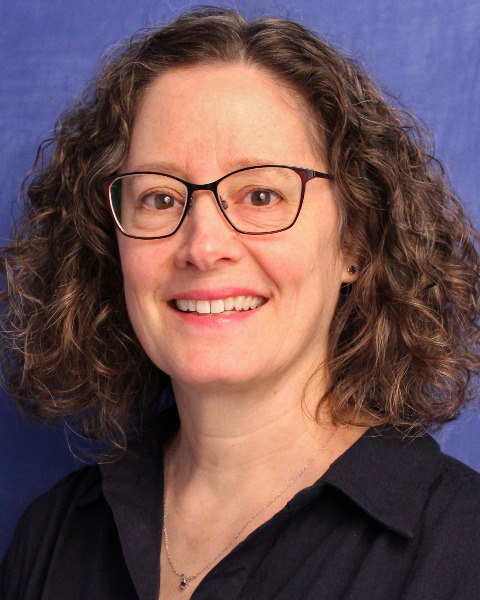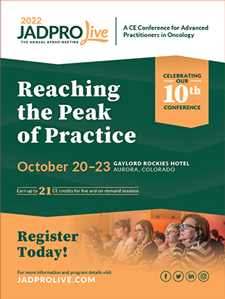Back


APSHO Patient Perspective Posters
JL1006P: Effective Collaboration on a Guide for People With Neuroendocrine Cancer
Saturday, October 22, 2022
10:00 AM – 11:00 AM ET

Has Audio

Margaret Bean, MEd
Senior Program Director
The Healing NET Foundation
Poster Presenter(s)
Background:
A diagnosis of neuroendocrine cancer triggers fear, and the terminology alone confuses patients living with this rare cancer. In 2019 the Healing NET Foundation convened a joint task force of physicians, patients, and caregivers to explore patient-physician communication and ways to improve the patient experience. High priorities for patients, as identified by the task force, include finding accurate and trustworthy information and receiving proper care throughout assessment, decision-making, treatment, and ongoing monitoring. The group’s top recommendation was to develop a patient “primer” with reliable, vetted information.
Process:
First the task force reviewed materials already in existence. While detailed medical information was available through other sources, very little was available from the patient perspective on navigating this rare diagnosis. The group, in coordination with Healing NET Foundation staff, decided to focus on creating a roadmap to the patient journey that also acknowledged the uniqueness of the journey for each person.
The patients and caregivers on the task force--who serve as support group leaders and advocates—took the role of contributing authors. A lead author/editor was chosen from within the group to provide continuity of voice. The physicians’ role was to review any medical information for accuracy and to provide supplemental commentary throughout the guide. Staff helped coordinate the writing process, were involved in editing, and planned publication. A patient focus group reviewed the final draft and gave valuable feedback.
Navigating the NET Patient Journey: Valuable Insights and Resources for Living with Neuroendocrine Cancer, was published in December 2020. Over 1,000 print copies have been distributed to HCP offices, patient groups and individuals. The PDF has over 1,000 downloads.
Findings
Although the group writing process took longer than expected, involving multiple stakeholders yielded a document that is inclusive and comprehensive.
• Having contributing authors who are support group leaders meant that a much broader experience was represented than that of the individual authors themselves.
• The medical expert perspective helped clarify expectations around care and lent authority.
• A focus group of patients added clarity and made the publication more user-friendly.
Establishing the role of lead writer/editor created an efficient interface with the authors and with the Healing NET staff. In an iterative process, the point person took responsibility for harmonizing the disparate writing styles, making decisions about chapter organization, and adjusting the level of detail in the different chapters.
By capturing the patient voice, not only are patients helped, but healthcare providers and other stakeholders have reported that they can better understand what patients with this rare disease go through.
Recommendations:
• Involve multiple stakeholders when developing materials for patients and caregivers.
• To avoid duplication, clarify what the need is and research what is already available.
• Establish the roles of each participant.
• Agree on a timeline. Coordinate and communicate any changes.
• Early in the process, plan how to promote and distribute the resource. Set up systems to track delivery and to gather feedback on usage and value.
A diagnosis of neuroendocrine cancer triggers fear, and the terminology alone confuses patients living with this rare cancer. In 2019 the Healing NET Foundation convened a joint task force of physicians, patients, and caregivers to explore patient-physician communication and ways to improve the patient experience. High priorities for patients, as identified by the task force, include finding accurate and trustworthy information and receiving proper care throughout assessment, decision-making, treatment, and ongoing monitoring. The group’s top recommendation was to develop a patient “primer” with reliable, vetted information.
Process:
First the task force reviewed materials already in existence. While detailed medical information was available through other sources, very little was available from the patient perspective on navigating this rare diagnosis. The group, in coordination with Healing NET Foundation staff, decided to focus on creating a roadmap to the patient journey that also acknowledged the uniqueness of the journey for each person.
The patients and caregivers on the task force--who serve as support group leaders and advocates—took the role of contributing authors. A lead author/editor was chosen from within the group to provide continuity of voice. The physicians’ role was to review any medical information for accuracy and to provide supplemental commentary throughout the guide. Staff helped coordinate the writing process, were involved in editing, and planned publication. A patient focus group reviewed the final draft and gave valuable feedback.
Navigating the NET Patient Journey: Valuable Insights and Resources for Living with Neuroendocrine Cancer, was published in December 2020. Over 1,000 print copies have been distributed to HCP offices, patient groups and individuals. The PDF has over 1,000 downloads.
Findings
Although the group writing process took longer than expected, involving multiple stakeholders yielded a document that is inclusive and comprehensive.
• Having contributing authors who are support group leaders meant that a much broader experience was represented than that of the individual authors themselves.
• The medical expert perspective helped clarify expectations around care and lent authority.
• A focus group of patients added clarity and made the publication more user-friendly.
Establishing the role of lead writer/editor created an efficient interface with the authors and with the Healing NET staff. In an iterative process, the point person took responsibility for harmonizing the disparate writing styles, making decisions about chapter organization, and adjusting the level of detail in the different chapters.
By capturing the patient voice, not only are patients helped, but healthcare providers and other stakeholders have reported that they can better understand what patients with this rare disease go through.
Recommendations:
• Involve multiple stakeholders when developing materials for patients and caregivers.
• To avoid duplication, clarify what the need is and research what is already available.
• Establish the roles of each participant.
• Agree on a timeline. Coordinate and communicate any changes.
• Early in the process, plan how to promote and distribute the resource. Set up systems to track delivery and to gather feedback on usage and value.

